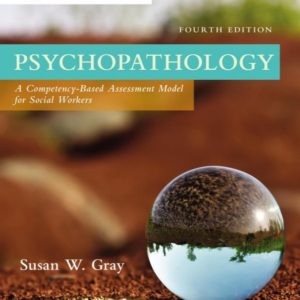Written by authors with extensive experience in the field and in the classroom, Introduction to Forensic Psychology: Research and Application, Fifth Edition, by Curt R. Bartol and Anne M. Bartol, demonstrates how to analyze psychological knowledge and research findings and then apply these findings to the civil and criminal justice systems. Focusing on research-based forensic practice and practical application, this text uses real-life examples and case law discussions to define and explore forensic psychology. This text introduces you to emerging specializations within forensic psychology, including investigative psychology, family forensic psychology, and police and public safety psychology. You will develop a multicultural perspective with an ethnic and racial sensitivity, which is critical to the successful practice of forensic psychology.
New to the Fifth Edition:
Updated statistics, research, and case law, such as recent Aid in Dying legislation, as well as analysis of recent events, help you see the real-world applications to current events.
Updated Focus boxes empower you to dig deeper into current issues, such as mental health courts, community-oriented policing, child abduction, hate crimes, the death penalty, and more. All Focus boxes also contain discussion questions for you to debate in a classroom setting.
All new From My Perspective boxes provide you with information about career choices as well as helpful advice about pursuing your career goals.
Increased attention to immigration-related issues offers you additional insights into immigration proceedings and ways to consult with the courts.
Additional coverage of human trafficking and online sexual predators enables you to better understand the psychological effects on victims and the services available to help.
Current research on violent video games, cyberbullying, and cyberstalking provides real examples of the effects of violent media.
New research on juveniles allows you to see the important contributions of neuropsychologists, particularly in terms of brain development in adolescents and promising community-based treatment approaches for juveniles.





